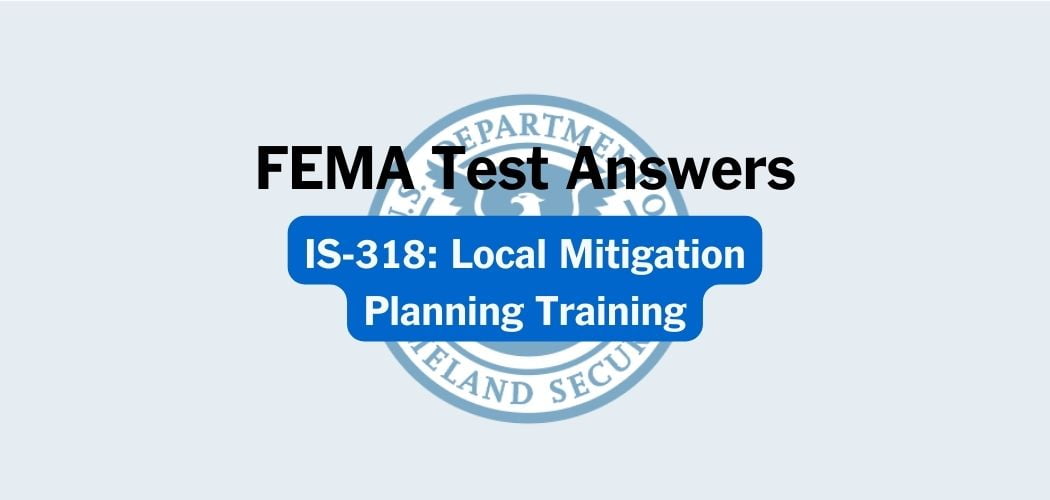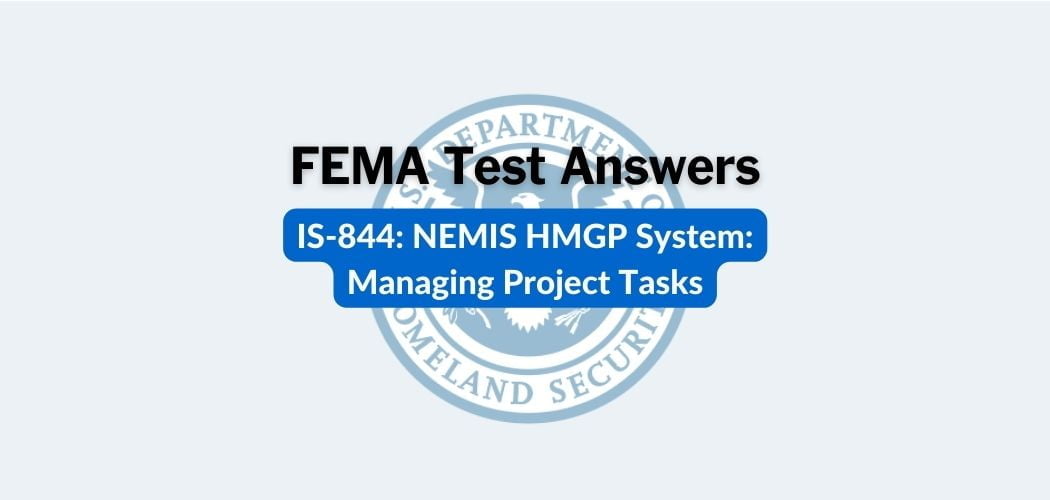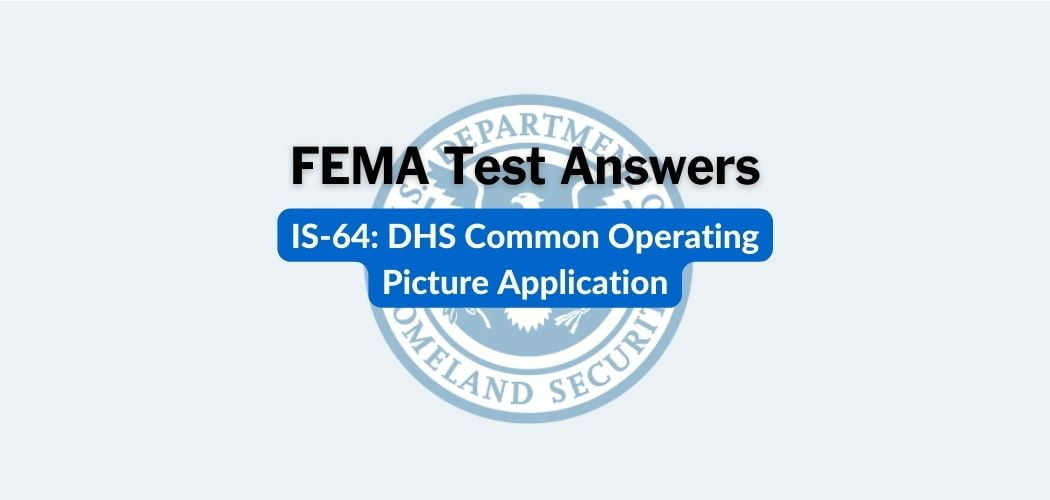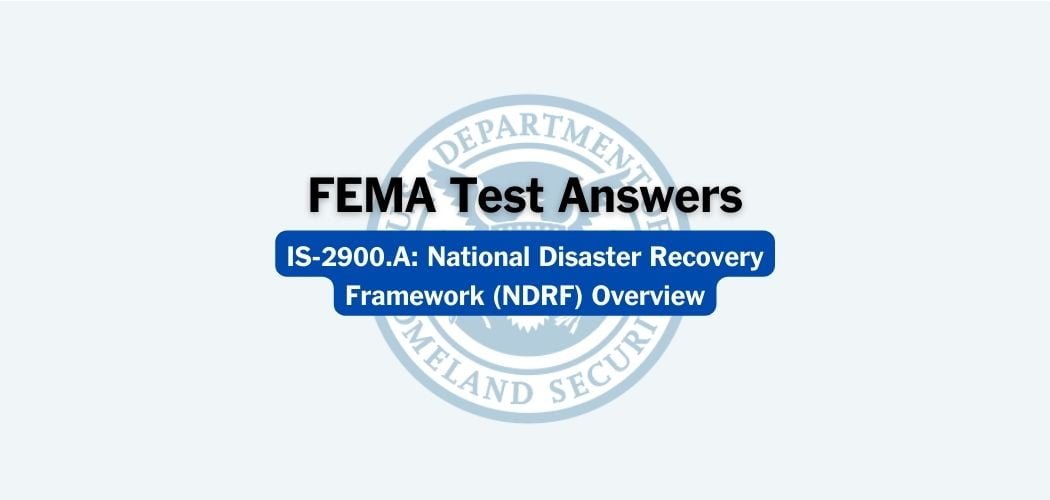Overview: FEMA IS-61.B course was published on 9/20/2016. The Homeland Security Geospatial Concept of Operations has been designed to present the 4 basic values of the GeoCONOPS to users from several perspectives: points of collaboration, technical capabilities, sources for authoritative data, and best practices.
At the conclusion of FEMA IS-61.B, students will be familiarized with the importance of the 4 key values of the GeoCONOPS to the National Preparedness System, NIMS and the Incident Command System (ICS)
Primary audience: Geospatial technical personnel supporting operations centers at State and Local Governments; this will also include technical staff located in DHS regional offices.
FEMA IS-61.B test answers
Each time this test is loaded, you will receive a unique set of questions and answers. The test questions are scrambled to protect the integrity of the exam.
Question 1. Which part of the mission life cycle is the period of greatest uncertainty due to the lack of accurate information from the field and a large number of questions and requests for information?
A. Prevention
B. Mitigation
C. Response✅
D. Recovery
E. Protection
Question 2. Is this statement true or false? The GeoCONOPS provides formal guidance for the conduct of geospatial support.
A. TRUE✅
B. FALSE
Question 3. What does the GeoCONOPS enable users to do?
A. Discover and leverage geospatial resources
B. Facilitate geospatial information and resource sharing and coordination
C. Find geospatial resources, capabilities, tradecraft, and best practices
D. All of the above✅
Question 4. Which part of the mission lifecycle implies a state of readiness to minimize the impacts of a disastrous event on life and property?
A. Prevention✅
B. Mitigation
C. Response
D. Recovery
E. Protection
Question 5. In addition to its inclusion in the PPD-8, the GeoCONOPS has been carefully aligned to which federal doctrine?
A. Emergency Support Function (ESF)
B. National Incident Management Systems (NIMS)
C. Incident Command System (ICS)
D. National Response Framework (NRF)
E. All of the above✅
Question 6. Why is a GeoCONOPS needed?
A. To support the DHS mandate to document the organization principles of the geospatial community
B. To make available geospatial information and capabilities that strengthen national security and resilience✅
C. To eliminate the occurrences of terrorism, cyber attacks, pandemics, and natural disasters
D. To define and develop the mission lifecycle
Question 7. The GeoCONOPS has been adopted into federal doctrine through its inclusion in which document?
A. National Preparedness Goal (PPD-8)✅
B. Incident Command System (ICS)
C. Federal Interagency Operational Plan
Question 8. Is this statement true or false? The GeoCONOPS facilitates geospatial resource sharing and promotes best practices.
A. TRUE✅
B. FALSE
Question 9. How does the GeoCONOPS’ alignment to federal doctrine benefit the geospatial community?
A. Improves communication between federal and state/local entities
B. Ensures that federally derived information reaches front-line mission staff in a timely fashion
C. Directs focus to operational technologies that are proven to address mission requirements
D. Improves coordination by documenting mission information that will be available to the community
E. All of the above✅
Question 10. Is this statement true or false? The GeoCONOPS’ alignment with federal doctrine causes duplication of effort in the geospatial community.
A. TRUE
B. FALSE✅
Question 11. Which part of the mission life cycle is vital to the prevention of reoccurring and foreseen losses as a result of natural and man-made disaster events?
A. Prevention
B. Mitigation✅
C. Response
D. Recovery
E. Protection
Question 12. Which part of the mission lifecycle addresses capabilities to safeguard against acts of terrorism and man-made or natural?
A. Prevention
B. Mitigation
C. Response
D. Recovery
E. Protection✅



